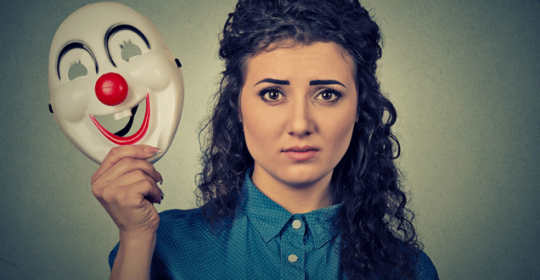
Bipolar Disorder
Bipolar disorder, formerly known as manic-depressive disorder, is a quiet commonly used term these days. Many famous people declared to suffer from it; such as Robin Williams, Mel Gibson, Catherine Zeta-Jones, Amy Winehouse, Sinéad O’Connor, Britney Spears, Jean-Claude Van Damme, Axl Rose, Russell Brand, Richard Dreyfuss and many more. Moreover, many historical personalities are believed to have suffered from bipolar disorder; such as Frank Sinatra, Ernest Hemingway, Vincent van Gogh, Friedrich Nietzsche, Florence Nightingale, Edvard Munch, Edgar Allan Poe and many more.
Bipolar disorder seems to be a common disease that everybody knows somehow. But what are the facts? In this article we would like to give you an overview over the disease and answer the most common question.
Definition
As the name suggests, Bipolar Disorder is a mood disorder where patients can show both poles of the mood span alternating. Meaning patients could switch frequently from mania (“too happy”) to depression (“too sad”). But what is “too” happy or “too” sad? Who decides if it is a normal mood or a disease? The answer is clear. The suffering itself defines the disease. Meaning, the right question to ask should be: Is anybody suffering? The patient itself or the surrounding? If nobody is suffering it is absolute fine to be sad or happy sometimes. It belongs to life. The situation changes if somebody is suffering from its sadness or even is at the point to commit suicide because the suffering is so extreme that it appears like there is no way out. These people have the right and they should have an easy access to professional help. There should be no stigma holding them back. It’s not a weakness or failure in any kind. The same is applicable for the surrounding. If other people suffer from the behaviour of somebody else, they should have the possibility to express their suffering and search help; e.g. your spouse is so “happy” that he gambles away your whole savings because he continuously believes to be “lucky” the next time. Or a pilot who is so “happy” and over-confident that he believes that he doesn’t need sleep or any kind of safety measures anymore before flying you to your holiday destination. In these situations the patient himself won’t suffer but there is a possibility that others will.
It is not a psychiatrist or any other doctor who decides in first place if somebody is mentally ill. It’s the patients themselfs and their surrounding.
Facts
Even though many successful people are suffering from bipolar disorders, it is a serious disease. Some facts: 11% to 15% of untreated patients are committing suicide. Up to 50% attempt suicide. More than 50% will develop drug or alcohol misuse. The divorce rate is increased three-fold. 50% will be unemployed 6 months after a manic episode. 800 out of 100,000 People living in the U.S. are suffering from it. Onset is most commonly between 15-24 years. Both sexes are equally affected. Bipolar disorders are more common in urban areas and in upper socioeconomic classes and higher educated people.
Causes
The causes of bipolar disorders are still unknown. Most probably there won’t be a single cause but a multifactorial genesis. The Stress-Vulnerability-Coping Model is a commonly used model to explain mental illnesses. Scientists could identify many different risk factors; like a positive family history of bipolar disorder. Patients whose father or mother suffered from bipolar disorder have a 20% higher risk to develop it as well. Moreover childbirth was discovered as a risk factor. 45% of women suffering from bipolar disorder had their first episode in the postpartum period. Stress – be it physical (eg physical illnesses) or psychological (eg work, relationship etc.) – seems to be a risk factor; as well as drug or alcohol abuse.
Symptoms and signs
Depression: The ICD-10 defines 3 major symptoms which are depressed mood, Loss of pleasure and interest in activities and Fatigue or loss of energy. Other symptoms could be lack of concentration and memory, hopelessness, feelings of guilt and unworthiness, suicidal tendencies, sleep disorders, loss of appetite and weight.
Mania: The ICD-10 defines 2 major symptoms which are abnormally euphoric mood or irritated mood. Further symptoms could be lack of concentration and distractibility, racing thoughts, poor judgment, reckless behavior, increased impulsivity, inflated self-esteem, increased energy, increased activity, hyperactivity, rapid speech, reduced need for sleep, increased libido and hyper sexuality.
Psychotic symptoms: in both episodes it is possible that psychotic symptoms occur.
Forms
Bipolar I disorder is described as the combination of 2 or more episodes of Mania and Depression or mixed episodes.
Bipolar II disorder is described as the combination of 2 or more episodes of Hypomania and Depression or mixed episodes.
Rapid cycling bipolar disorder is described as the combination of 4 or more episodes of Mania and Depression or mixed episodes in one year.
Ultra rapid cycling bipolar disorder is described as the combination of 4 or more episodes of Mania and Depression or mixed episodes in one month.
Diagnosis
As in any mental illness first severe organic causes have to be ruled out. This should be done by a psychiatrist and include physical examination, blood tests and the MRI of the brain should not be older than 1 year. If medication should be used other diagnostic procedures may be applicable like EEG or ECG. In the second step the psychiatrist will do psychiatric examination and evaluate based on the ICD-10 or the DSM-IV the symptoms. Moreover there are neuropsychological tests available to evaluate the symptoms of manic or depressive episodes under the supervision of our top Neurologists in Dubai.


